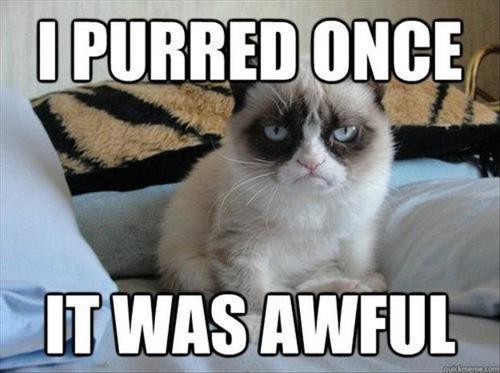 It doesn't matter if you're an avid tweeter, a Tumblr addict, or a Facebook junkie; there's one thing you can't avoid on the Web: memes. Memes are everywhere and just about anything or anyone can become one. Grumpy Cat, Alex from Target, Overly Attached Girlfriend, Success Kid — all of them started out as normal, everyday people (or animals), but were somehow catapulted into the online spotlight, overnight.
It doesn't matter if you're an avid tweeter, a Tumblr addict, or a Facebook junkie; there's one thing you can't avoid on the Web: memes. Memes are everywhere and just about anything or anyone can become one. Grumpy Cat, Alex from Target, Overly Attached Girlfriend, Success Kid — all of them started out as normal, everyday people (or animals), but were somehow catapulted into the online spotlight, overnight.
The actual term “meme” comes from the 1976 book ‘The Selfish Gene’ by Richard Dawkins, who defined it as a ‘unit of cultural information passed between people’, but today, memes are most commonly known as those funny pictures with puns and jokes overlaid on top in bold, white lettering.
What is a meme?
A meme is quite simply a concept, behavior, or idea that spreads virally, usually via the Internet. Memes most commonly appear as pictures or videos, but they can also take the form of a link, hashtag, a simple word, phrase, or even an entire website. Memes can also take the form of viral videos, with one of the most famous examples being the "Harlem Shake" memes that took over the Internet in early 2013. (The original video has now received more than 75,000,000 views)
If used effectively, memes can spread like wildfire and help audiences build a deeper connection with a brand. Here are two examples of campaigns that made meme history amongst the online community.
1. Gangnam Style
In December 2012, the exuberant “Gangnam Style” video became the first YouTube clip to be viewed more than one billion times. Thousands of viewers responded by creating and posting their own variations of the video - “Mitt Romney Style,” “NASA Johnson Style,” “Egyptian Style,” and many others. “Gangnam Style” is one of the most famous examples of an Internet meme - spreading quickly around the web in various iterations and becoming a shared cultural experience.
2. Dumb Ways To Die – Metro Australia
Created as a public service announcement to promote train safety in Melbourne, the Dumb Ways to Die campaign was a huge viral success, garnering over 91,000,000 views on Youtube. It went viral through shares on social media overnight, and within a week, the ad had generated $50 million in media value.
The video portrays a number of illustrated characters dying in strange ways, and approaches the rather dark public service announcement with a friendly song and illustrations. The video became its own meme, inspiring a host of parodies, such as ‘Cool ways to find’ featuring the Curiosity Rover and “Grand Theft Auto V: Dumb Ways to Die.’ Further to its success, an Android game and a song were subsequently released.


